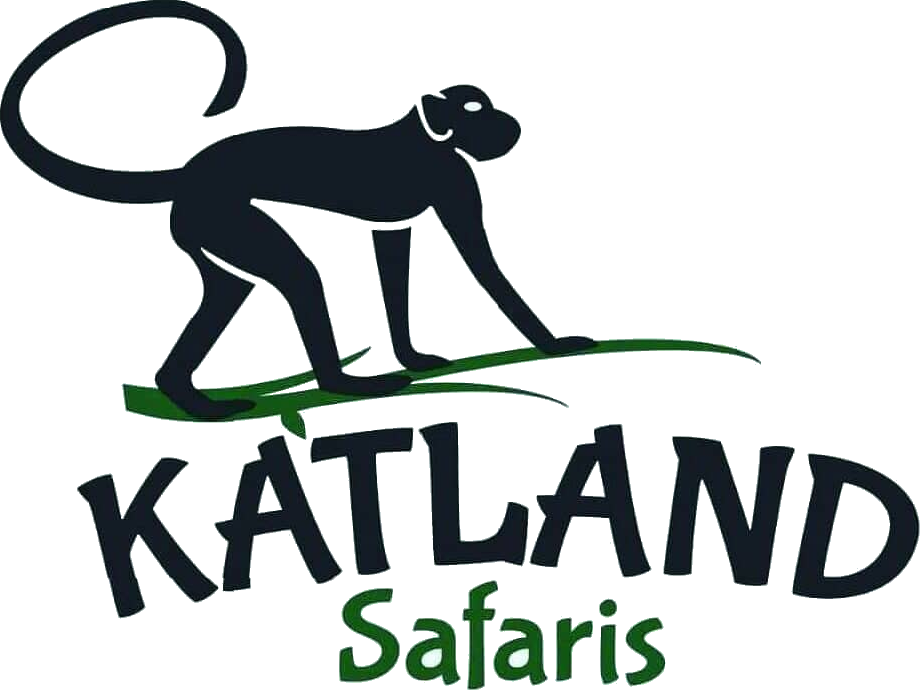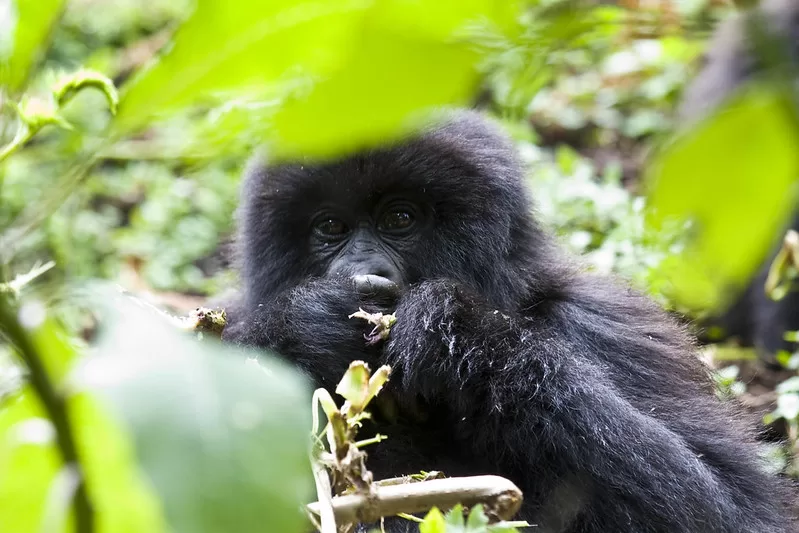Beyond sabinyo.
On the outside fence of a house-hold compound or rugo, a brilliant red and yellow bloom was on show. Indicated that fresh sorghum beer had been produced just inside. Coming off an involuntary run of sobriety for the census, Big Nemeye homed in on the signal like a bee searching for honey.
Not too long thereafter, he had negotiated several large umusururu bowls for each of the porters as well as himself. The light brown liquid slid down their throats as naturally as the Kinyarwanda name of the beverage came out of their mouths. Bill turned down a suggested bowl due to his dislike of the beer’s accompanying sorghum chaff. With team morale better, we carried on Karisoke.
The usually lush soils of the Virunga pied-mont lost way at the foot of Sabyinyo to a hard lava pan. Hollow pounding noises revealed large natural caverns under our feet. Nemeye said without explanation that many of the locals hid and sometimes perished in these caverns during difficult times.
Above earth, the thin soils supported areas of grass between rocky outcroppings, giving herd boys in this area a rare chance to bury their cattle. Once we had passed, Bill expected the same cattle to migrate illegally into the park.
Beyond Sabyinyo the ground recovered to its natural richness and the soils sank. Lush rows of potatoes and beans reached the horizon, contrasting with big square areas of white pyrethrum blossoms. Against the height of the volcanoes, the scene seemed appealing. Only the sporadic Markhamia or Hagenia tree silently spoke to the fact that all of this land had been ripped from the park barely 10 years earlier.
When RACHEAL CARSON published quiet spring in 1962, Western human health and nature suffered.During the post-world war 11 chemical revolutions, DDT proved to be a strong pesticide. It let American and European farmers raise their fruit and vegetable harvests and considerably broaden their control over harmful insects. Pollinators and other helpful insects were also destroyed, however.
It crept stealthily up the food chain to poison frogs, fish, birds, humans. DDT was outlawed and the hunt for less harmful substitutes got underway when legislators at last paid attention to the scientific data. Already cultivating pyrethrum, a daisy-like flower with natural pesticide power, Kenya was Exports of pyrethrum surged as a new international market sought to fulfill.
But Kenya’s attempts to increase output run counter to its restricted high-altitude territory needed to produce pyrethrum. The park had greater high terrain habitat and Rwanda previously cultivated some pyrethrum in the Ruhengeri area for gorilla tracking.

Using funds from the European Development Fund and without an environmental impact study, the Rwandan government hurried forward with a project to increase pyrethrum output. Cleared from the Parc des Volcans in 1968 and 1969 were twenty-five thousand acres of low elevation forest habitat.
Five thousand households received five acre plots known as paysannats on which they were expected to keep forty percent of their land in pyrethrum. In a nation plagued by ongoing land scarcity, it was a popular initiative among Northern Rwandans even if top political leaders from the area grabbed vast amounts of the cleared land unlawfully.
Global demand for pyrethrum was already declining by the late 1970s. With shorter and less troublesome supply lines than those extending all the way to land bound Rwanda, Western scientists had succeeded in producing numerous less hazardous substitutes for DDT. Local farmers adjusted by producing more marketable and edible white potatoes and defying pyrethrum output limitations.
Too suited to the loss of habitat, gorillas moved higher up the mountain. But the gorillas were subjected to extremely freezing temperatures every night as the park boundary dropped to approximately nine thousand feet. Already a major cause of death, pneumonia kills much more of the extremely young, elderly, and unwell.
Though no one has ever documented how the gorillas had before utilized the area cleared for paysannats, it was evident that they had lost a portion of the forest rich in several of their favored foods including vast stretches of bamboo.
Standing at the conclusion of that day and feeling hopeful despite the encouraging census results was difficult. The scene around seemed as if humans had been living there for millennia. Still, forty percent of the Parc des Volcans 22 percent of the whole Virunga forest had been removed 10 years ago.
Mountains Gorilla habitat that had existed for millennia has vanished in a relative blink of an eye. Whatever the census figures indicated, it appeared doubtful that there was sufficient habitat remaining within the shrinking park limits for their survival.
Looking out over the field and thatched rugos that reached to the south as far as the eye could see, Pucked and Tucked sat shoulder to shoulder.
Amy could also see they were eating thistle from a better view point. But why had they come out of the park and risked approximately thirty yards across open ground to climb up that rocky hill?
Did they realize that among the ugly potatoes and pyrethrum was gorilla food hidden? Puck barely was nine, four years older than his sibling Tuck. Though both were too young to recall the region before to park clearance, both were still young enough to let curiosity to guide them on a reconnaissance trip into uncharted territory.
Amy had never seen any gorillas outside of the park gate before. Now all she could do was consider their motivations maybe in line with a rare clear day? And wait with some worry for them to return to the group. Puck and Tuck had completed their feast 10 minutes later, ambled over the gully between two rows of potatoes, and dropped back into the forest. They would not come back to the fields while we were there.
The 1970s saw quite unusual use of conservation research.Nearly all of the few individuals dedicated to long-term field research in African rain forest settings were behavioral scientists. Leaders in the field, Jane Goodall and Dian Fossey’s work satisfied a ravenous worldwide demand for knowledge about the life of chimpanzees and gorillas.
But as the situation of these animals became more evident, so did the necessity for sounds to guide us in saving them. Amy’s research on mountain gorilla feeding ecology was meant to guide people in charge of gorilla protection on these threatened species most basic survival needs.


